Finding out what your Pokemon cards are worth doesn't have to be overwhelming. Whether you've rediscovered a childhood collection in your attic or you're a current collector evaluating recent pulls, this comprehensive guide walks you through every step of determining accurate card values—from identifying key information on your cards to understanding what collectors actually pay in 2025.
Quick Answer
To find your Pokemon card's value, you need three things:
- 1. Card name and number (found at bottom of card)
- 2. Set name (also at bottom, with a small symbol)
- 3. Condition (Near Mint, Lightly Played, etc.)
Table of Contents
- Step-by-Step Guide to Finding Card Values
- Understanding Card Condition (Most Important Factor)
- What Makes Pokemon Cards Valuable?
- Vintage vs. Modern Card Values
- Best Places to Check Current Prices
- Common Valuation Mistakes to Avoid
- Where to Sell Your Cards
- Should You Get Your Cards Graded?
- Frequently Asked Questions
Step-by-Step Guide to Finding Card Values
Identify Your Card
Flip your card over and look at the bottom. You'll see something like "Charizard 006/165". This tells you the card name and its number within the set.
Example:
Pikachu VMAX 044/185
• Card name: Pikachu VMAX
• Card number: 044/185 (card 44 out of 185 total in the set)
Find the Set Name
Next to the card number, you'll see a small symbol and/or set abbreviation. The set name is critical because the same Pokemon can appear in dozens of different sets with vastly different values.
Common Set Identifiers:
- Base Set (1999): No symbol or text (shadowless) or small shadow on right side
- Modern Sets: Usually have set logo/abbreviation like "SVP" (Scarlet & Violet Promos) or "PAL" (Paldea Evolved)
- Vintage Sets: Check set symbol guides—Jungle has a jungle tree, Fossil has a fossil symbol, etc.
Check for Special Markings
These markings can multiply your card's value by 10x or more:
- ✓"1st Edition" stamp (small "1" on left side of vintage cards) - Adds 3-10x value
- ✓Shadowless border (no shadow on right side of artwork) - Base Set only, adds 2-5x value
- ✓Card number exceeding set size (e.g., 195/185) - These are Secret Rares, usually worth $20-500+
- ✓Holographic/Full Art/Rainbow foiling - Significantly increases value over non-holo versions
Assess the Condition (Critical!)
This is where most people get tripped up. A card in Near Mint condition can be worth 5-10x more than the same card with visible wear. See the condition section below for detailed guidance.
Jump to Condition GuideLook Up Current Market Price
Now that you have all the information, check current selling prices. Don't rely on asking prices—only use sold listings to see what buyers actually paid.
Fastest Method: PokeScope Scanner
Take a photo of your card and get instant price estimates based on real market data.
Try Free Scanner →Understanding Card Condition: The Most Important Factor
Card condition affects value more than any other factor. A pristine vintage Charizard can sell for $50,000+ while a damaged one might fetch $200. Here's how to accurately assess condition:
Near Mint (NM)
Looks fresh from the pack. May have minor manufacturing imperfections (tiny print lines, slight centering issues) but zero play wear.
- ✓No edge wear or whitening
- ✓No scratches on surface
- ✓Corners are sharp
- ✓No creases whatsoever
Value: 100% of market price
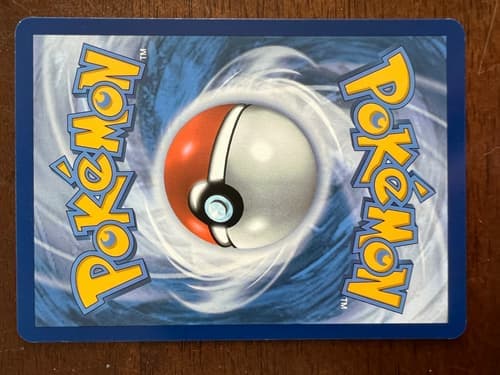
Lightly Played (LP)
Light wear from careful handling or play. Acceptable to most collectors for personal collections.
- •Minor edge wear or whitening on 1-2 corners
- •Light surface scratches (not easily visible)
- •Slight corner softening
- •No creases
Value: 50-75% of NM price
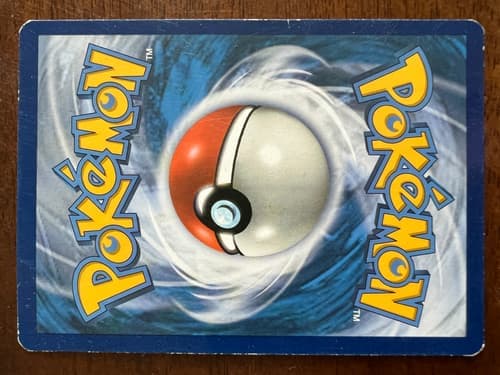
Moderately Played (MP)
Obvious play wear but still structurally intact. Acceptable for casual players but not collectors seeking premium condition.
- •Noticeable edge whitening on multiple corners
- •Surface scratches visible at normal viewing distance
- •Minor creasing possible
- •Rounded corners
Value: 30-50% of NM price
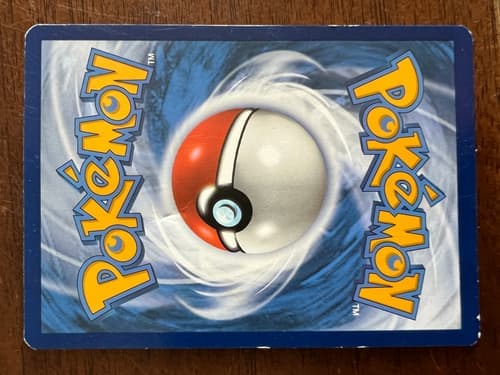
Heavily Played (HP)
Significant wear from extensive play. Only valuable if the card is rare or highly sought-after.
- •Heavy edge wear and whitening on all corners
- •Multiple scratches across surface
- •Visible creases
- •May have minor tears at edges
Value: 15-30% of NM price
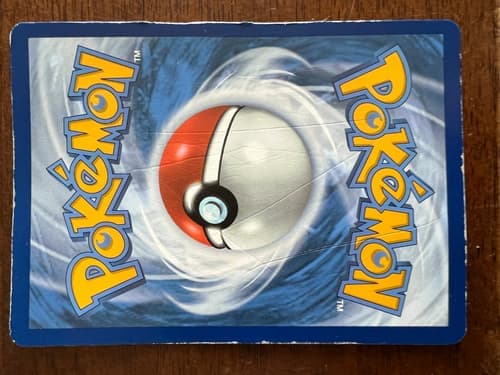
Damaged (DMG)
Major damage making the card unsuitable for play or display. Only ultra-rare cards retain value in this condition.
- •Major creases or bends
- •Tears, holes, or significant pieces missing
- •Water damage or staining
- •Writing or permanent marker on card
Value: 5-15% of NM price (if any)
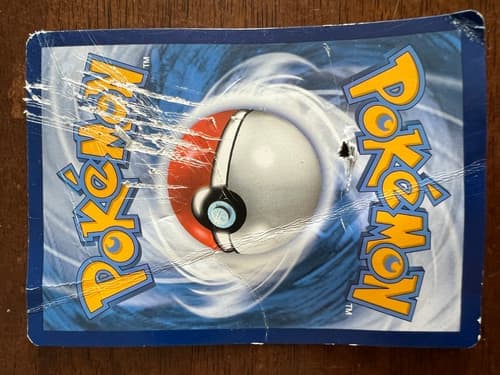
💡 Condition Assessment Tip
When in doubt, be conservative. Most people overestimate their card's condition. Compare your card closely to the images above in good lighting. Check all four corners, both sides of the card, and hold it at an angle to see surface scratches. Use our detailed condition guide for more examples.
What Makes Pokemon Cards Valuable?
Not all rare cards are valuable, and not all valuable cards are rare. Here are the factors that actually drive Pokemon card prices:
Pokemon Popularity
Charizard, Pikachu, Mewtwo, and other fan-favorites command 3-10x premiums over equally rare but less popular Pokemon.
Example:
Base Set Holo Charizard: $300-500 (HP condition)
Base Set Holo Chansey: $20-40 (HP condition)
Both are equally rare holos from the same set, but Charizard is 10x more valuable.
Age & Nostalgia
Cards from 1999-2003 (Base Set through EX series) are considered "vintage" and carry significant nostalgia premiums as millennial collectors return to the hobby.
Vintage Sweet Spots:
- • 1999 Base Set: Peak collector demand
- • 1999-2000 Jungle/Fossil: Strong secondary market
- • 2000-2003 Neo & E-Reader: Undervalued, appreciating
Visual Appeal
Full art cards, alternate art versions, rainbow rares, and gold secret rares with stunning artwork command premiums regardless of playability.
Modern collectors prioritize aesthetics. A beautiful alternate art Pikachu can sell for $100+ while a standard rare Pikachu from the same set might be worth $2.
Competitive Playability
Cards used in tournament-winning decks see temporary price spikes. This creates short-term value but is less reliable for long-term investment.
Warning: Competitive prices are volatile. A $50 card can drop to $10 after rotation or meta shifts.
Print Run & Scarcity
First Edition, limited promos, tournament prizes, and error cards have actual scarcity driving values.
Scarcity Multipliers:
- • 1st Edition Base: 3-10x unlimited version
- • Shadowless Base: 2-5x unlimited version
- • Championship Prize Cards: $10,000-$100,000+
Graded Gem Mint Status
PSA 10 or BGS 10 (Gem Mint) cards can be worth 3-10x their raw Near Mint equivalents, especially for vintage cards where pristine copies are rare.
Example:
1st Edition Base Charizard:
- • Raw Near Mint: ~$3,000-5,000
- • PSA 9: ~$8,000-12,000
- • PSA 10: ~$40,000-60,000+
Vintage vs. Modern Card Values
Vintage Cards (1999-2007)
Characteristics:
- • Base Set, Jungle, Fossil, Team Rocket
- • Neo series, EX series, Gold Star cards
- • Limited print runs (pre-mass production)
- • Strong nostalgia factor for millennials
Value Ranges:
- Commons/Uncommons: $0.25-$5
- Non-holo Rares: $1-$20
- Holo Rares: $5-$500+
- 1st Edition Holos: $50-$5,000+
- Gold Stars: $500-$10,000+
Investment Outlook:
Generally stable and appreciating. Base Set and 1st Editions have shown consistent 10-20% annual growth. Best for long-term holds.
Modern Cards (2016-Present)
Characteristics:
- • Sun & Moon, Sword & Shield, Scarlet & Violet
- • GX, V, VMAX, VSTAR, ex mechanics
- • Massive print runs (widely available)
- • Focus on visual appeal and alternate arts
Value Ranges:
- Commons/Uncommons: $0.05-$0.50
- Standard Rares: $0.25-$5
- Holo/V/GX: $1-$30
- Ultra Rares: $5-$100
- Alt Arts/Rainbows: $20-$500+
Investment Outlook:
Volatile. Most cards peak at release then decline as print runs continue. Alternate arts and special illustrations hold value better. Best for opening/flipping, not long-term holds.
💡 Collector's Strategy Tip
If you found childhood cards from the '90s or early '00s, focus your research there—that's where hidden value lives. Modern cards from the past few years are well-documented and unlikely to surprise you with unexpected value unless they're rare alternate arts or secret rares.
Exception: Modern error cards or extremely low-pop graded 10s can have significant value.
Best Places to Check Current Prices
Always check multiple sources and focus on sold listings, not asking prices. Here are the most reliable price sources:
PokeScope Price Scanner
Our recommended method
Take a photo of your card and get instant AI-powered value estimates based on real-time market data from multiple sources. Includes condition assessment and selling recommendations.
eBay Sold Listings
Shows what buyers actually paid in the past 90 days. Most accurate for vintage and high-end cards.
How to use:
- 1. Search your card name + set + card number
- 2. Filter by "Sold Items"
- 3. Compare to cards in similar condition
- 4. Look at the last 10-20 sales for average price
Pro tip: Ignore extreme outliers (suspiciously high/low prices). Focus on the middle range.
TCGPlayer Market Price
The largest Pokemon card marketplace. Excellent for modern cards, decent for vintage. Shows current asking prices and recent sales.
Best for:
- • Modern sets (2016-present)
- • Standard rare/holo cards
- • Quick price checks on bulk
Caution: "Market Price" can lag behind actual sales. Check the sales graph for trends.
PSA/BGS Population Reports
For graded cards, check how many exist in each grade. Lower population = higher value premium.
A card with 5,000 PSA 10s will have minimal grade premium. A card with only 50 PSA 10s can command 10x+ premiums over lower grades.
Facebook Groups & Discord
Private communities often have more accurate pricing for rare vintage cards. Join groups like "Virbank City Pokemart" to see real collector-to-collector sales.
Warning: Be cautious of scams. Only deal with verified sellers with positive feedback.
🚫 Avoid These Sources
- Google Shopping "estimated values": Often wildly inaccurate, showing prices from years ago or for wrong editions.
- Random price guide websites: Many are outdated or use inflated "book values" that don't reflect real sales.
- Active eBay listings (asking prices): Sellers can ask any price. Only sold listings show what people actually pay.
- Local card shop "buying prices": Shops typically offer 40-60% of market value since they need to resell at a profit.
Common Valuation Mistakes to Avoid
Mistake #1: Overestimating Condition
Most people think their cards are Near Mint when they're actually Lightly Played or Moderately Played. Any edge whitening, surface scratches, or corner wear drops the card from NM.
✓ Solution:
Inspect your card under good lighting at multiple angles. Compare to our condition guide images. When in doubt, grade conservatively—it's better to be pleasantly surprised than disappointed.
Mistake #2: Confusing Unlimited with 1st Edition
A 1st Edition Base Set Charizard is worth $3,000-50,000+ depending on condition. An Unlimited version (no 1st Edition stamp) is worth $300-5,000. That small stamp matters.
✓ Solution:
Check the left side of the card below the Pokemon's image. If there's a small black circle with a "1" inside, it's 1st Edition. No stamp = Unlimited Edition.
Mistake #3: Trusting Old Price Guides or Outdated Information
Pokemon card values change constantly. A card worth $100 last year might be $50 today (or vice versa) due to market trends, reprints, or meta shifts.
✓ Solution:
Only use current sold listings from the past 30-90 days. Ignore price guides older than 6 months unless you're researching historical trends.
Mistake #4: Not Checking the Exact Set
Pikachu has appeared in 200+ different cards across dozens of sets. A Pikachu from Base Set is worth $5-50. A Pikachu from a 2023 promo set might be worth $0.50.
✓ Solution:
Always match the exact card number and set symbol. Never assume "Pikachu holo" is valuable without confirming which specific Pikachu it is.
Mistake #5: Assuming Rarity = Value
A rare symbol (★) doesn't automatically mean value. There are thousands of rare cards worth under $1. Conversely, some uncommon or even common vintage cards can be worth $5-20 due to collector demand.
✓ Solution:
Rarity is just one factor. Pokemon popularity, condition, set, and visual appeal matter just as much or more. Always check actual market prices, not just rarity symbols.
Where to Sell Your Pokemon Cards
Different selling methods work best for different card values. Here's how to maximize your return:
For High-Value Singles ($50+)
eBay (Recommended)
Largest audience, best prices for valuable cards. Fees are 12-13% but you'll get 80-100% of market value.
Tips: Take clear photos, include condition description, offer free shipping to increase bids.
Facebook Groups (Virbank City, TCA Gaming)
Lower fees (0-3%), direct collector-to-collector sales. Best for rare vintage cards where you want knowledgeable buyers.
TCGPlayer (For Established Sellers)
Works best if you have many cards to sell. Requires seller verification and has fee structure similar to eBay.
For Mid-Range Cards ($5-$50)
eBay Auctions (Set Low Start Price)
Let the market decide. Start at $0.99 with no reserve. Popular cards will bid up to market value.
Local Card Shop (If You Need Cash Fast)
Expect 50-60% of market value, but you get cash immediately. Good for moving multiple cards at once.
Mercari / OfferUp
Lower fees than eBay (10%) and simpler selling process. Good for local meetups to avoid shipping.
For Bulk Commons/Uncommons (Under $5)
Sell in Lots on eBay
Group by set or type: "500 Pokemon Commons/Uncommons Mixed Sets" can sell for $25-50 ($0.05-0.10 per card).
Local Card Shop Bulk Buylist
Many shops pay $3-5 per 1,000 commons. Extremely low rate but fast if you have thousands of cards.
Facebook Marketplace / Craigslist
Sell large collections locally. Parents buying for kids often pay $50-100 for bulk lots without checking individual values.
⚠️ Important Selling Tips
- Always use tracking for cards worth $20+: Protects both you and the buyer.
- Package cards properly: Use a penny sleeve + top loader + cardboard backing + bubble mailer. Poor packaging = returns and negative feedback.
- Be honest about condition: Over-describing flaws is better than under-describing. Returns cost you money.
- Avoid selling to random Instagram/Twitter buyers: Scam risk is high. Stick to platforms with buyer/seller protection.
Should You Get Your Cards Graded?
Professional grading (PSA, BGS, CGC) can significantly increase a card's value—or it can cost you money if done wrong. Here's when grading makes sense:
✓ Grade These Cards
- •Vintage holos worth $50+ raw that appear Near Mint or better (especially 1st Edition)
- •Modern alternate arts / rainbow rares that came straight from pack to sleeve (likely PSA 10)
- •Cards with low PSA 10 populations where gem mint status commands 5-10x premiums
- •High-end cards for long-term investment - grading protects condition and proves authenticity
✕ Don't Grade These
- •Cards worth less than $50 raw - grading costs more than potential value increase
- •Cards with any visible flaws - if you see edge wear or scratches, it won't get PSA 10
- •Modern bulk holos - PSA 10 premiums on common modern holos are minimal ($5-10)
- •Cards you want to sell quickly - grading takes 2-6+ months with most services
Grading Service Comparison
| Service | Cost Per Card | Turnaround | Best For |
|---|---|---|---|
| PSA | $25-150+ | 2-6 months | Vintage cards, highest resale value, most respected |
| BGS | $30-200+ | 1-4 months | Modern cards, subgrades important, Black Label 10 premium |
| CGC | $15-100+ | 1-3 months | Budget option, good for personal collection, lower resale value |
💡 Grading ROI Calculator
Before grading, do this calculation:
Expected PSA 10 value - (Raw card value + Grading cost + Shipping)
If the result is less than $50 profit, grading probably isn't worth it
Example:
Base Set Holo Blastoise in pristine condition
• PSA 10 sells for: ~$1,500
• Raw Near Mint value: ~$400
• Grading cost: $50
• Shipping both ways: $30
• Potential profit: $1,020 ✓ Worth grading
Frequently Asked Questions
Ready to Value Your Collection?
Use PokeScope's free card scanner to get instant, accurate price estimates on any Pokemon card. No more guessing or outdated price guides.
Join 100,000+ collectors using PokeScope to track and value their collections